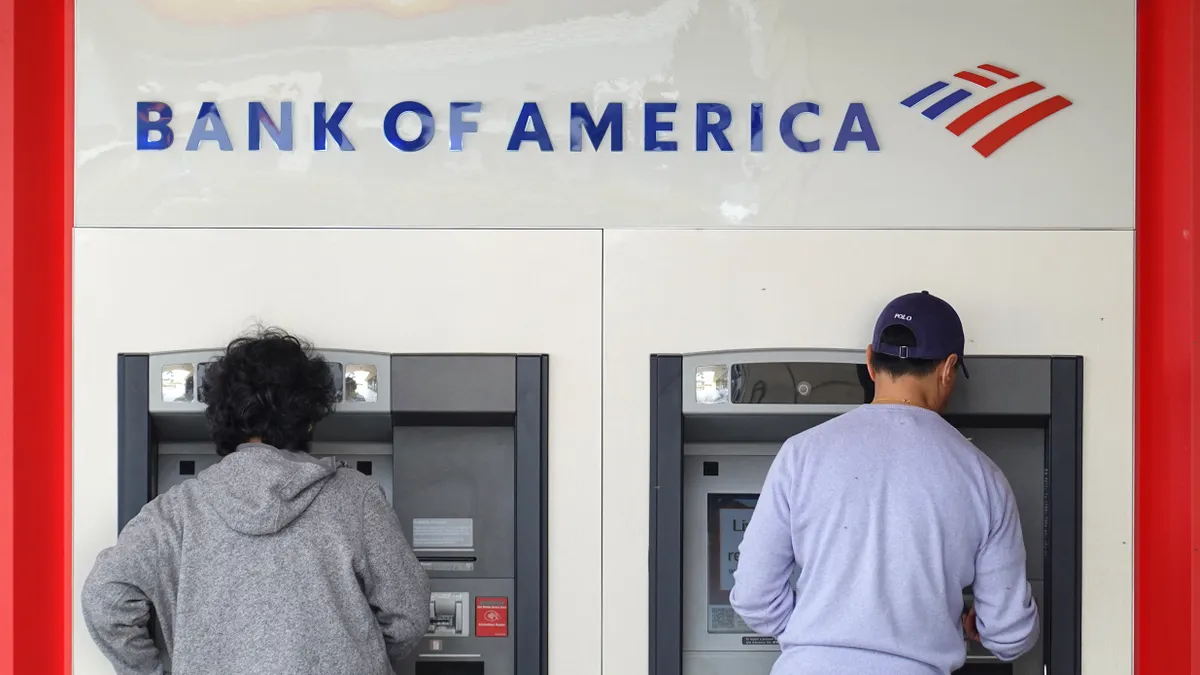Dive Brief:
- Bank of America is rolling out a family banking product in three states before launching it nationwide in December, the lender said Thursday.
- The account, designed for parents with children younger than 16, offers a debit card and digital banking access for children and enables parents to supervise their child’s spending.
- “This is primarily focused on serving the needs of our parents, knowing that these children will be our future clients,” said Mary Hines Droesch, the bank’s head of product for consumer, business and wealth management banking and lending, during a recent interview.
Dive Insight:
With the product, the Charlotte, North Carolina-based bank has taken its no-overdrafts account and added family-focused features. Those include allowing parents to set limits on a child’s spending and ATM withdrawals, and to receive real-time alerts about their child’s transactions, Hines Droesch said. As a child gets older, a parent can add them as an owner of the account, which also offers financial education resources.
Bank of America is launching family banking Thursday in Connecticut, Maine and Rhode Island, expanding into other states over the next three months before rolling it out across the U.S. in December.
To be sure, the second-largest U.S. lender certainly isn’t the first to launch a family banking-related product. A number of banks and fintechs, from JPMorgan Chase and Capital One to PayPal’s Venmo, Greenlight and Step, are angling to serve parents and children as banking and payments have become increasingly digital, and cash is used less frequently.
For parents, digital transactions offer information on their child’s spending that cash can’t, Hines Droesch said.
Bank of America employees piloted the product this year, and Hines Droesch has used it with her 13- and 10-year-olds. Seeing her elder child’s after-school spending on pizza and ice cream prompted a conversation about making healthy choices before dinner. Likewise, her younger child’s Amazon purchase spurred a talk about staying within budget, as taxes and shipping pushed the total over her child’s spending limit for the week.
The bank’s product has facilitated “that dialogue around financial education in a way that wasn’t possible when it was theoretical,” she said.
As the bank solicited client feedback, a family banking product was repeatedly mentioned as something customers wanted, Hines Droesch said.
“We spent a lot of time doing research to understand how they would want this structured, what was important to them to see and control. That’s what drove our priority features,” she said.
The bank envisions adding more features and functionality to the product down the road, with some enhancements planned for next year.
Expanding the spend categories that can be restricted, to give parents “very granular” control, is on the list, Hines Droesch said. Right now, those include restrictions around cryptocurrency or gaming transactions.
Additionally, “this is starting with a core account, but ultimately we'd want to add things like savings, maybe even investments, over time,” Hines Droesch said.
While some other banks have partnered with a fintech to provide their customers with access to family banking functions, Bank of America preferred to create its own product in-house, Hines Droesch said.
“We wanted it deeply integrated with the experience our clients already have using products they already know how to use,” she said. “For this product, we did not see the need to have to go partner with an external third party.”
Hines Droesch declined to quantify the market share opportunity the bank is going after with the new offering. The bank also declined to identify any targets with the product. But establishing a relationship with younger consumers early on and growing with them offers an enticing opportunity for banks.
“Core to our growth strategy is that we serve the needs of all of our clients, and those who may be just getting started grow into a much larger part of our [income statement] over time,” she said. “Those become the clients of our future.”
Although there’s no shortage of rivals eyeing that Gen Z and Gen Alpha business, Hines Droesch downplayed the idea of fintechs offering Bank of America tough competition in this area.
“Certainly, fintechs each go after a piece of the financial chain,” she said. “We really ensure that we deliver financial education and support for clients, and security in a way that a fintech never can.”
Hines Droesch said she appreciates fintechs because the bank watches what they’re doing and considers applicability for the banks’ clients. “But they don’t have the scale and the depth of capabilities that a Bank of America does,” she added.
As the bank assesses other functions to add to the product, though, the lender “would always consider partnerships as part of those decisions,” she added.














